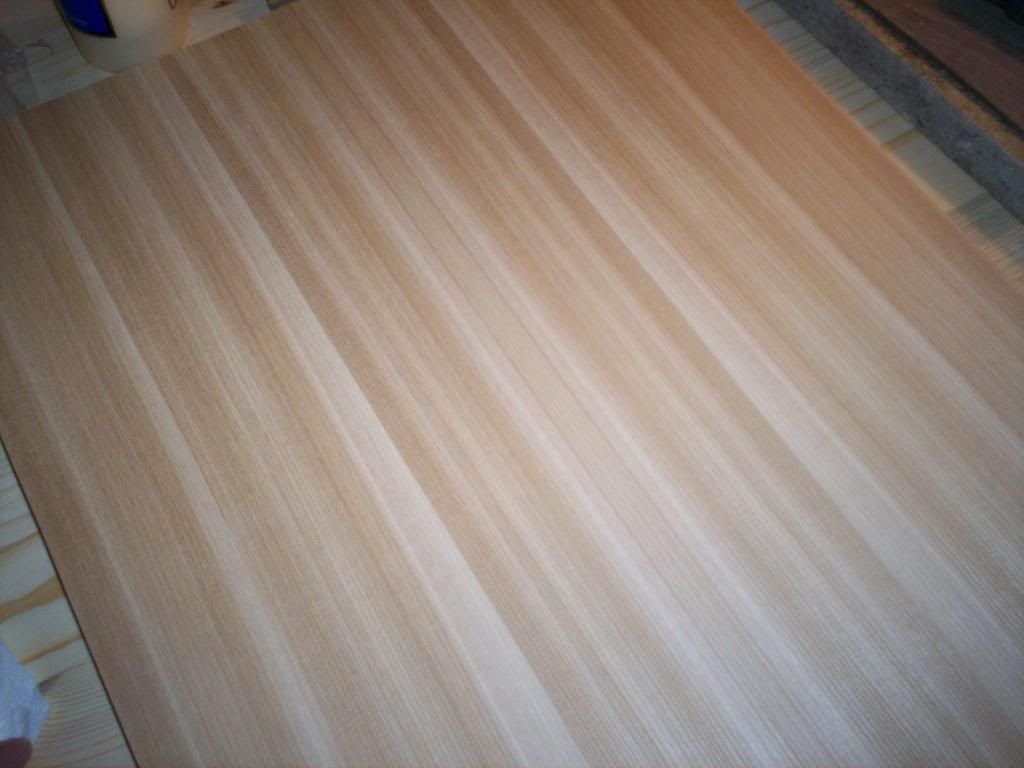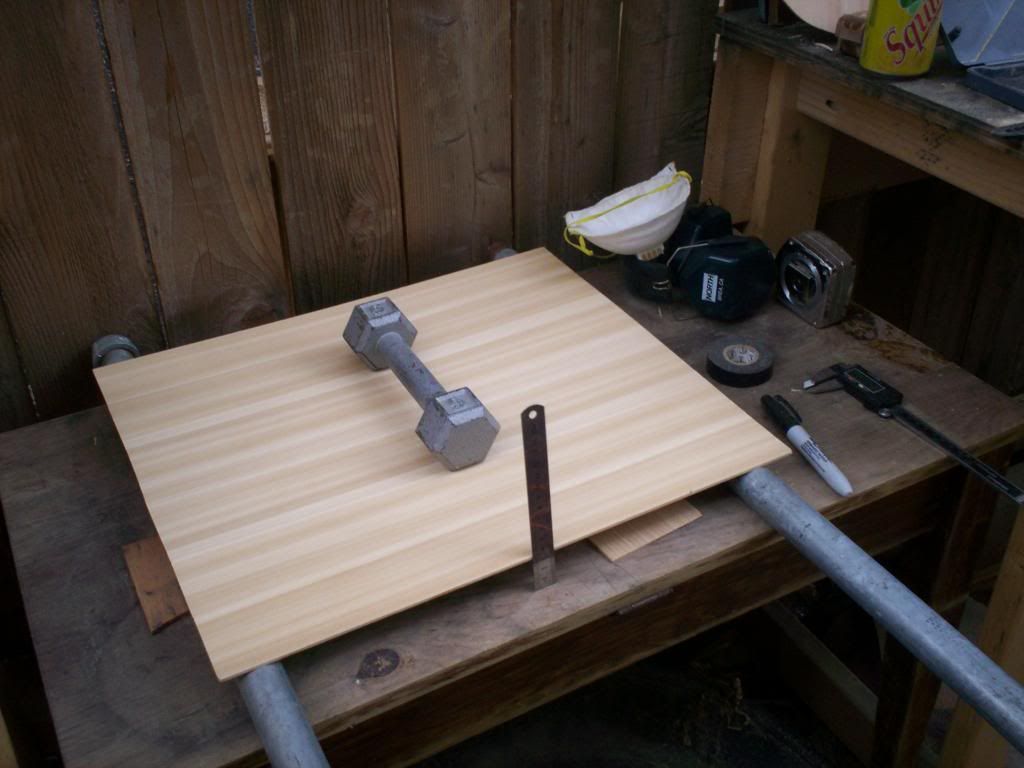Wrapped the drum on my sander with 80 grit sandpaper today and fired her up. Awesome way to thickness wood. Still took a while. I had to go from .16" on average, down to just prior to final thickness. After using the drum sander, the thickness of my top was around .11". And it was deflecting about 3 millimeters on an 18", 5LB deflection test. So I started hand sanding at that point with a block and 100 grit. Got it to 6 millimeters on the deflection test and .1" almost exactly. A few deviations in the thousandths of an inch around the perimeter. I'm going to assume that's normal. I don't see how you can get an exact, precise thickness through the entire piece. Then I finished up with some 220.
Here's a better picture of the wood. It's quite pretty.

And here is my home spun deflection testing setup.

I actually changed the setup slightly after I took this picture. I realized that the 5LB weight was deflecting more in the center of the plate than the edges. So my edge ruler reading was off a bit. So I placed a thin but straight piece of wood on top of the plate and the weight on top of that, to more evenly distribute the weight across the plate. Gave me a more accurate reading.
In any case. Somogyi recommends, in his book, "Making the Responsive Guitar" a beginner thickness their top to .095 inches. So I figure .1" is not far off from that. And, a little extra thickness gives me some room to sand around the perimeter to loosen up the top a bit if I think it needs it.
And, I'm 3/4 of the way through gluing up the rosette. Taking forever. 30 minutes per piece for the glue to set prior to continuing to the next piece, and around 24 total pieces.